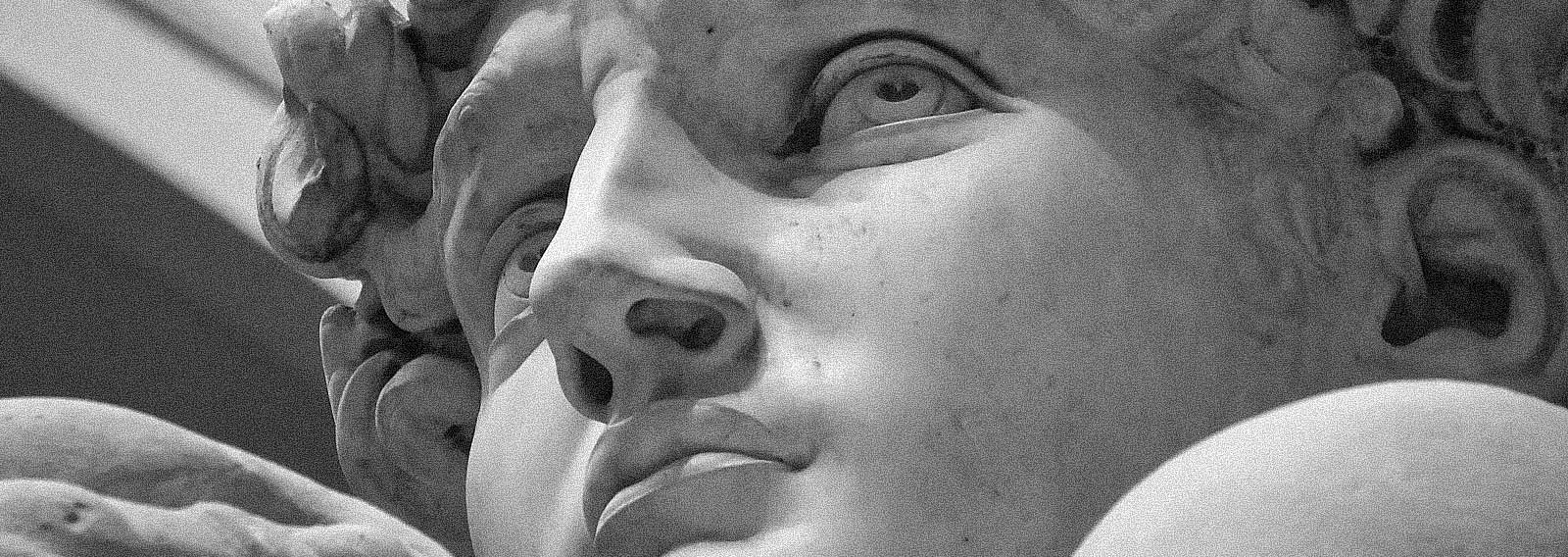‘Far right’.
It is an accusation levelled at conservatives by left-wing politicians to gain cheap points with their base of politically illiterate students. Sometimes this is followed by a Nazi suffix – which not only invalidates the accusation, but also betrays both the origin of the insult and the true politics of the people who hurl it.
To discuss the meaning of ‘far-right’, we have to examine the political spectrum upon which this term sits.
Most people understand that there is something deeply wrong with the language used to describe politics. It is fraught with inconsistent logic and dubious definitions. The closer you look, the more serious its flaws become until ‘left’ and ‘right’ are rendered meaningless, particularly when they are compared between countries. The American left would be considered fringe right inside Eastern Europe, while recent Australian politics barely translates to anything other than the most superficial of its global definitions because we were not part of the events that created them.
Things make a lot more sense if we strip politics back to basics.
The political spectrum is a line that runs from the absolute Big State on the left, all the way to no state on the right. Control versus anarchy is the foundation of the human political spectrum.
Political systems then align themselves accordingly, with centrist politics sitting halfway between the two. In general, a measure of state control is used to temper the chaos of a lawless system. The majority of these err left, favouring increased state power because human leaders like the trappings of authority. It is rare to find a political ideology that favours less power for those in charge. The bulk of these right of centre abnormalities belong to descendants of English liberty and their unusual power struggle with the monarchy that ended up with reduced power for both the state and the Crown, rather than a dictatorship.
There are plenty of political attributes that have nothing to do with the spectrum and belong to regimes at both ends which are incorrectly talked about as being ‘of the right’ or ‘of the left’ because a prominent historical leader incorporated them into their regime.
Nationalism is common to nearly every system, from ancient civilisation to modern states, as it formed the basis of tribal politics predating the old world city-state. Racism, corruption, warfare, expansionism – these are all depravities that exist across the spectrum, but are often incorrectly attributed as a definition of left and right. Philosophical, religious, and economic features overlay the state that can hint at, but do not necessarily define, their position. For example, there are religious nations at both extremes and all across the centre depending on how much power that religion chooses to exert.
Anarchical systems are the true definition of ‘far-right’ and yes, they are a terrible idea.
Civilisation rarely attempts pure anarchy because it requires the dismantling of personal political power and results in the predation of the weak by the strong. The human desire to escape the cruel anarchy of the wilderness is one of the core drives that created modern politics – which is an exchange of absolute freedom for a measure of protection, paid for with tax. Even so, most humans have never been truly anarchical because we inherited social regulation from our primate ancestors.
Modern attempts to create a state built on anarchy, usually at the hands of violent revolutionaries, either entailed nature-cults with strict regulations or, bizarrely, versions of Socialism which enforced Big State ideology as an expression of anarchy from Capitalism. (No, it doesn’t make sense – yes, that’s why they do.)
Anarchy has been used incorrectly by Socialist revolutionaries to rebel from another form of authority. These rebellions have been religious and political. In Europe specifically, it tended to be a rebellion from feudalism, and then later it was against Capitalism. Revolutionary anarchy included movements that we know as Anarcho-Communism, which abolished all other regulation in favour of common ownership and direct democracy. It grew from the radical Socialists after the French Revolution and is not anarchism in any true sense of the political ideal, but it does explain why Communist kids run around the streets claiming to support anarchy while worshipping the Big State.
This political hijacking of terms by revolutionaries is one of the reasons that the political spectrum is such a mess.
Here we have ‘far-right’ anarchy being adopted by the hardest-of-hard-left Communists, creating a circle out of the spectrum. Instead of indulging this error like countless weak-willed historians, it makes more sense to simply call it out for what it is – manipulative language. Some of these anarchist communities have explicitly defined themselves as, ‘beyond the reach of the prevailing government’ which confirms that they are not anarchists at all but rather separatists. In truth, The Golden Age of Piracy sailed much closer to anarchy than any radical Communist, but even pirates had rules to maintain a measure of commerce. Essentially, anarchy is an untested extremity of human politics.
We return to the political spectrum with Big State on the left, and true anarchy on the right.
This general concept holds true, with parties on the left tending towards more state control and unionisation, while centrist, conservative, and right of centre parties increasingly headed in the direction of a smaller state. The Liberal Party of Australia, as laid out by Menzies, was looking to increase individual liberty at the expense of state control – inching the nation nearer to anarchy without encroaching on the chaos of a lawless system. This is why you hear Australian Liberals described as the ‘small state’ party on the centre-right. It is also why parties to the right of the Liberal Party campaign for even more freedom and less government.
To accuse a party of being ‘far-right’ you would need to present evidence that they have argued in favour of dismantling law entirely to the point of breaking down the state. You would never use it to accuse a party of being authoritarian.
Now, consider that the accusation ‘far-right’ is often used in conjunction with ‘Nazi’.
As we all know, Hitler’s Nazism is known for its complete lack of state control and devotion to absolute individual liberty – just kidding.
Nazism or National Socialism, as it is more formally known, is another expression of Socialism’s Big State, totalitarian rule over the people. It is part of a suite of Socialist ideologies which took hold of Europe last century with different regimes developing their own political expression of a Socialised state.
Socialism, in its pure sense, is the collectivisation of the means of production controlled by the state. In the melting pot of twentieth-century European politics, the political spectrum narrows to this Socialist world view.
Socialism is a complex story, but it essentially emerged as a serious political force in France toward the end of the 1700s as a response to criticism of feudalism and tyrannical monarchies, climaxing in the French Revolution. It was further spurred on into what we call Marxism or Communism by the writings of Karl Marx, who was a German writer publishing from the mid-1800s and his co-author, Friedrich Engels. Finally, Socialism reached fever-pitch in Russia with the October Revolution of 1917 and the start of Lenin’s Russia (which would later become Stalin’s Russia as one world war rolled into the next).
By the 1930s, much of Europe had descended into a Socialist civil war where various leaders were developing the core ideology to suit their own interests and to separate themselves from other Socialist political forces – all of whom were vying for absolute power against each other whilst engaging in external wars with neighbouring nations who did not share their views.
Post-WWI, the forces of poverty, wealth, and significant class shifts caused by unconscionable levels of death, set the stage for a ruthless political game. Russia had solidified itself as a Socialist force since the fall of the tsars and served as an anchor for fledgling Socialist ideologies in Europe. Many Socialist parties in surrounding nations were funded by and operated under direction from Moscow. These Socialist parties were internationalist because they referenced each other throughout the war period.
In France, the revolution of 1789 forever tilted France’s political landscape left, with Socialists and Communists entrenched during the inter-war period where an impoverished, limping government presided over a demoralised population. ‘Far-right’ in 1930s France denoted groups interested in traditional nationalism (which upset the Socialists who were pushing for global Socialism in Europe and were attempting to break down the notion of nation-states) and ethnic nationalism (which, although far more sinister, is not a measure of left or right either as it holds roots in political systems from ancient time to present day – including in Communist systems). None of these ‘far-right’ groups in France had anything to do with conservationism or a desire to head towards a state of anarchy. ‘Far-right’ was more correctly used to distinguish anyone in France who was not a Socialist – regardless of what they actually subscribed to.
Fascism began its rise in Italy. Before WWI, Mussolini was very poor and as a result, became interested in the typical narrative of the European Socialists. From here, he fell heavily into Anarcho-Syndicalism which was a major Marxist force within European politics. Anarcho-Syndicalism wanted the unions to gain control of the economy and considered themselves directly opposed to the concept of Capitalism because they viewed wages as a type of slavery.
Eventually, Mussolini ended up in the Italian Socialist Party (PSI) and from 1912-1914, Mussolini headed up its Bolshevik wing (the far left) which removed moderates. Long story short, the PSI were fiercely anti-war. When WWI came around, all their international Socialist allies in other countries went to war, but the PSI kept out of it. Mussolini watched with great interest what happened to class conflict inside the warring Socialist nations of Europe. He noticed that the idea of nationalism, that is the love of one’s country, tended to intensify when a nation came under military threat. Nationalism was a stronger unifying force than the Marxist class conflict.
Mussolini’s obsession was to forge the great Socialist worker’s revolution dreamt of by Karl Marx, by first uniting the workers in their love of the Italian nation. The hope was that, once united under nationalism, the Italians would then rise up in a Socialist worker’s revolution.
Inside Italy, Syndicates popped up. In this case, ‘syndicate’ is a word borrowed from the French (syndicat) to mean ‘trade union’. These trade union Syndicates gained power and began to merge into Fascism, where collections of trade unions were created to promote the common interest, promising to look after both the workers and bourgeoisie (middle class). Fascism is from the Italian fascismo referring to the bundling together of these syndicates.
The PSI maintained its anti-war stance throughout WWI, setting it at odds with the other European Socialist parties. Mussolini, who was pro-war like the other Socialists, was forced out of the PSI. He returned to Anarcho-Syndicalism and floated the idea of uniting the Italian nation under a trade union Syndicate, founding the idea of the Fascist Corporate State.
In Italy, it was the Fascist trade unions that created the corporations and thus controlled the Corporate State. The Fascist revolutionary syndicates already existed in smaller divisions across Italy, but it was Mussolini who united them into a single political ideology (which was still a Marxist movement). The purpose of this was to unite the classes into the idea of the Italian nation-state. Nationalism in Mussolini’s Italy was an expression of absolute Socialist control of the state and a way to protect Italy’s scattered ethnic population from falling to pieces as war stretched across Europe.
Italian Fascism was not, in any way, a ‘right’ of centre party. At the time of its creation, it was supported by the Socialists, Fascists, and a handful of surviving Capitalists (who were sometimes referred to as ‘far-right’ because they were not Communists). His collection of unions ended up with total control of a centralised state – totalitarianism – which we have already defined as far left. Indeed all Socialist regimes are totalitarian.
Mussolini remained a hard core Socialist until his death.
In short, Fascism was absolute union control of the state which used nationalism to spark a Socialist revolution. The longer you think about this, the more ridiculous accusations of Fascism equalling ‘far-right’ become.
Then we come to Germany and the origin of today’s coupling of ‘far-right’ with ‘Nazi’.
Like Mussolini, Hitler was a Socialist. His National Socialism (Nazi) political system despised Marxism and Capitalism in equal measure because he believed that both systems were run by Jews for the purpose of world domination. (Long story.)
Hitler was not a fan of international (Marxist) Socialism. The idea of European nations surrendering their national identities to become a collective of Socialist states (much like modern Globalism) horrified him. Hitler wanted to have his pure Socialism and keep the German identity – something which was more palatable to the German population who, after surviving a thousand years of conflict culminating in WWI, had no interest in dismantling the German nation.
More simply put, Hitler viewed Marxism as a corruption of pure Socialism. Before Marx, Socialism was intended as the collective state control of the means of production. It was Marx who added a focus on class conflict and worker control – but Hitler did not want to set the German classes against each other. Hitler’s version of Socialism replaced class control for racial control of the state – this suited both his delusions of racial superiority and desire to evict the Jews from Germany.
Socialism is totalitarianism – which is why all of its variations form totalitarian regimes. National Socialism is not and has never been a Capitalist system. Moreover, despite Wikipedia’s error, National Socialism is not Fascism either because Fascism explicitly rejects racial control of the state. Hitler was not a Fascist and Mussolini was not a National Socialist. (This does not mean that there were no racist Fascists, just as there were racist Communists like Stalin and Mao. Here we are talking about whether racism was a feature of the political system.)
Hitler hated what he called ‘Jewish Capitalism’ and ‘Jewish Bolshevism aka Marxism’. His violent antisemitism was rooted in his anti-Capitalism, while his desire to promote the German state was entwined with his National Socialism. Hitler’s favourite conspiracy theory was that the Jewish people were going to cause ‘the crisis of Capitalism’ in order to bring about the Marxist revolution and thus complete their quest for world domination. Marx was also a raging anti-Semite, sharing a comparable view that Capitalism was Jewish and called for the removal of Jews from society (from Karl Marx, On the Jewish Question). Racism against the Jewish people was something Karl Marx and Hitler shared despite their conflicting views over Socialism.
In short, Marxism wanted a worker collective while Hitler tried to create a race collective. Fascism was the national collective. The collective is the socialisation of a group by the state requiring the creation of a dictatorship.
There are plenty who attempt to read from the Communist version of Nazi Germany, falsely arguing that Hitler was a ‘far-right Capitalist’ because he was not a Communist. These academics repeat oxymorons like ‘State-Capitalism’ when of course, Capitalism is private ownership of production therefore it is impossible to have state ownership of private business. State-Capitalism is simply Socialism.
There was a measure of Capitalism under the Nazi regime, but it was not part of Hitler’s political design. Hitler’s solution to the (incorrect) Marxist notion of shrinking markets and the crisis of Capitalism – was to become an expansionist military force, taking land from other nations to provide for the collective and destroying the international Jewish State (which he viewed as the capitalist market) to complete his Socialist utopia.
The reason that Hitler’s National Socialism contained some private Capitalism was because he had to settle for limited Socialism until after his desired conquest of Communist Russia and erasure of the international Jewish population. It was only then, when Hitler thought Germany would be endowed with more land and resources, that he would be able to complete the dream of National Socialism and collectivise all industry to the racial state. He simply did not finish his final plan and so we were left to view his politics through an incomplete lens. Even so, Hitler nationalised many of Germany’s industries for the profit of the state and abolished private property rights. Any business or person who did not adhere to Nazi instructions had their properties confiscated – thus much of what we might recognise superficially as Capitalism was actually coerced by the state for its express will.
Hitler believed that Capitalism was literally the Jewish State and that Jews were literally Capitalism. Given this, he would have been very confused by the Communist accusation that, ‘Hitler was a Capitalist’ because, in Hitler’s mind, they would be accusing National Socialism of aligning itself with the Jewish people. Hitler also thought that Communism (Marxism) was a Jewish conspiracy to take over the world and destroy civilisation. His political spectrum had National Socialism in the middle with Jewish Communism to his left and Jewish Capitalism on his right. Hence the complete breakdown of political reasoning… None of this has ever made sense from a rational position, but it does help explain where these ideas of left and right came from.
Capitalism is (of course) a system of economics completely separate from the Jewish people, but it is important to understand what the misguided beliefs of these political ideologies were in order to understand how they operated.
This brings us back to the question of left-wing politics versus right-wing politics.
As we have established, the political spectrum runs from the absolute Big State to no state. It is a line that starts at the tyranny of the group and ends at the liberty of the individual.
Communism sits at the edge of the left, on the fringe of the political spectrum. This is the Communism of Lenin, Stalin, and Mao. Sitting a few inches away on the right are the Socialists, a group that are often absorbed by the Communists. To the right of these two groups, we have the Fascists (who are still Marxists) and even further – the National Socialists.
All of these groups are far-left, totalitarian ideologies built on the absolute Socialist State.
Because of the bitter political struggle, particularly inside Germany, the Communists took to calling the National Socialists ‘far-right’. This is how the modern slur came to tie up ‘far-right’ with Nazi – even though far right is not an accurate description of Nazism.
Those Socialists who called Capitalists ‘far-right’ – which happened separately – were closer to the mark but it was not what modern civilisation would consider a slur. The idea that a free market, democratic, Capitalist was somehow ‘bad’ does not fit inside the West where these things are valued. Instead, it originates from the Socialist belief that Capitalism is fundamentally evil. When this slur is used, it is not in connection with ‘Nazi’.
Historically speaking, ‘far-right’ was not used to describe conservatism at all because the European nations that started it did not have an equivalent conservative movement. They were Socialists fighting Socialists.
None of these warring Socialist movements give any reference to the greater Western world laid down by the British Empire which subscribes to the principles of liberty and democracy based on a prosperous Capitalist society. Although involved in the physical conflicts of WWI and WWII, democracies were not part of the ideological struggle within these European nations aside from a general jealousy that Western Capitalism had truly liberated the working class who not only had rising wealth but crucially, freedom – something denied to the working class by all Socialist states.
‘Far-right’ has always been an inconsistent accusation tossed about by Communists – usually at their fellow Socialists.
In today’s world, Communist university students use the idea of Capitalism being ‘far-right and evil’ and group it with Conservatives (who naturally support both democracy and Capitalism). This is how they come to the conclusion that a conservative is ‘far-right’.
If you meet a really politically inept revolutionary, they’ll attach ‘Nazi’ to a conservative Capitalist, proving that they have no understanding of history’s political movements.
After all, only a very stupid person could call Trump – a Capitalist, democracy-loving, anti-censorship, small government, free-market republican a ‘far-right-Fascist-Nazi’.






















